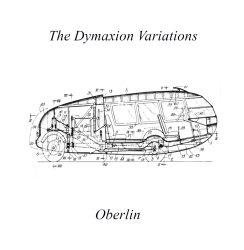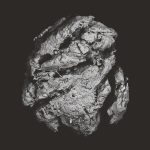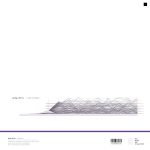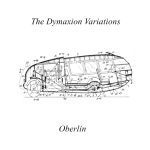YUI ONODERA – TOO NE 
If, like me, you associate the title with a different way of saying ‘tune’, you’re wrong. In fact, this music can hardly be more different from the concept of a ‘tune’.
These are ‘almost static ambient tracks’ (the word ‘drone’ is carefully avoided) ‘about a recognition of perceived stillness, even when there is change in the sounds’ relationships with each other, and with the listener.’
Too Ne is an (old) Japanese word that refers to ‘a sound that is sounding from far away. It is about distance, and also perhaps about reaching out to those sounds that seem to exist far away from us.’
Yui Onodera is a Tokyo-based sound artist whose works explore the relationship between musical forms, architectural acoustics, and spatial awareness. That description becomes more clear when listening to Too Ne, especially in the way the acoustic of the space you listen in interacts with the sound itself.
That this music is described as ‘almost static ambient tracks’ definitely does nót mean that there is not much happening. You’re literally ‘engulfed’ in sound, especially when played at a stronger volume.
Onodera created these five ‘Too Nes’ using field recordings, found objects, electric guitar and a Lyra-8 synth.
GREG DAVIS – NEW PRIMES
‘Almost static ambient tracks’ is also a good description for the music on New Primes by Greg Davis, because ‘drone’ simply does not cover what this music is about.
Greg Davis is a Vermont-based composer and audio engineer, who has released music ever since 2002. His discography shows a lot of solo recordings as well as many collaborations, such as with Keith Fullerton Whitman, Corey Fuller, Steven Hess, Sebastien Roux, Ben Vida, etc.
New Primes continues the concept of Primes (2009), then released on his own label Autumn Records. investigating the use of prime numbers as a compositional tool.
The listener can approach this music on different levels: the easy way is to just let the music flow and see what happens. Grasping the compositional process behind these pieces requires a bit more effort:
”I start by choosing a fundamental frequency for each piece and multiplying that frequency by each of the prime numbers in a given sequence to determine the overtones above the base frequency. Most of the overtones are transposed down several octaves to fit within a comfortable 3- or 4-octave audible frequency range. This becomes the ‘scale’ or harmonic space for each piece. The panning, fades, metronome speed and other variables of each overtone are related to its frequency.”
To realize these soundscapes, Davis created a custom software system in Max/MSP, using pure sine tones.
Reviving and reconsidering the original Primes concept led to an 8-channel performance in 2019. Each of the pieces is in fact generative, which means that they can last for days, or even forever. For this album, they are edited into shorter stereo versions.
New Primes is released on the Greyfade label run by Joseph Branciforte. It is available on high-resolution downloads as well as on vinyl (including the hi-res download). The release date is set for September this year, but the album can already be pre-ordered from the label website (hi-res versions) or from Bandcamp (standard formats).
Greyfade releases are not available on streaming platforms, “because these services do not currently offer an optimal environment for engaged listening, nor an equitable or sustainable economic model for artists.”
OBERLIN – THE DYMAXION VARIATIONS
The Dymaxion (car) was designed by Buckminster Fuller in 1933, as a ‘ground-taxiing phase of a vehicle that might one day be designed to fly, land, and drive’. There were only three of them built, of which one is still in a museum.
Alexander Holtz (Oberlin) imagined what music he would like to hear while driving the fully developed version and ‘float ergonomically and ecologically through every imaginable landscape’. Then he created this music with a eurorack synthesizer and an electric guitar.
It would probably not be a very long drive: The Dymaxion Variations EP is only 27 minutes long. Maybe a bit like the original prototype that. But the music definitely evokes a floating feeling (- and there’s no crash!).
The Dymaxion Variations is available on cassette via Mahorka Records, but can also be downloaded as a name-your-price download.






